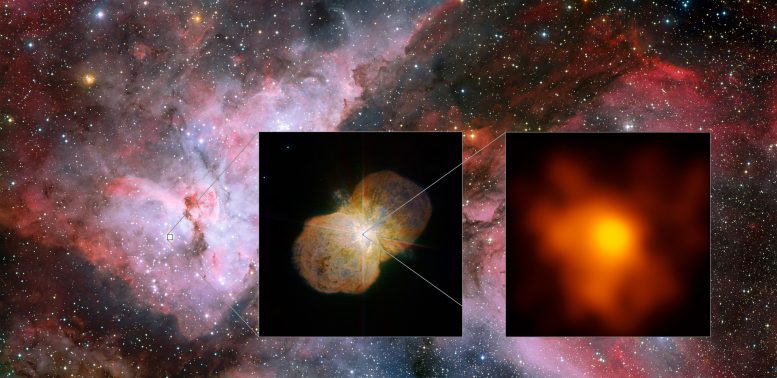
This mosaic shows the Carina Nebula (left part of the image), home of the Eta Carinae star system. This part was observed with the Wide Field Imager on the MPG/ESO 2.2-meter telescope at ESO’s La Silla Observatory. The middle part shows the direct surrounding of the star system: the Homunculus Nebula, created by the ejected material from the Eta Carinae system. This image was taken with the NACO near-infrared adaptive optics instrument on ESO’s Very Large Telescope. The right image shows the innermost part of the system as seen with the Very Large Telescope Interferometer (VLTI). It is the highest-resolution image of Eta Carinae ever. Credit: ESO/G. Weigelt
Using the Very Large Telescope Interferometer, a team of astronomers reveals the Eta Carinae star system in the greatest detail ever achieved.
High-resolution images reveal new and unexpected structures within the Eta Carinae binary system, including in the area between the two stars where extremely high velocity stellar winds are colliding. These new insights into this enigmatic star system could lead to a better understanding of the evolution of very massive stars.
Led by Gerd Weigelt from the Max Planck Institute for Radio Astronomy (MPIfR) in Bonn, a team of astronomers have used the Very Large Telescope Interferometer (VLTI) at ESO’s Paranal Observatory to take a unique image of the Eta Carinae star system in the Carina Nebula.
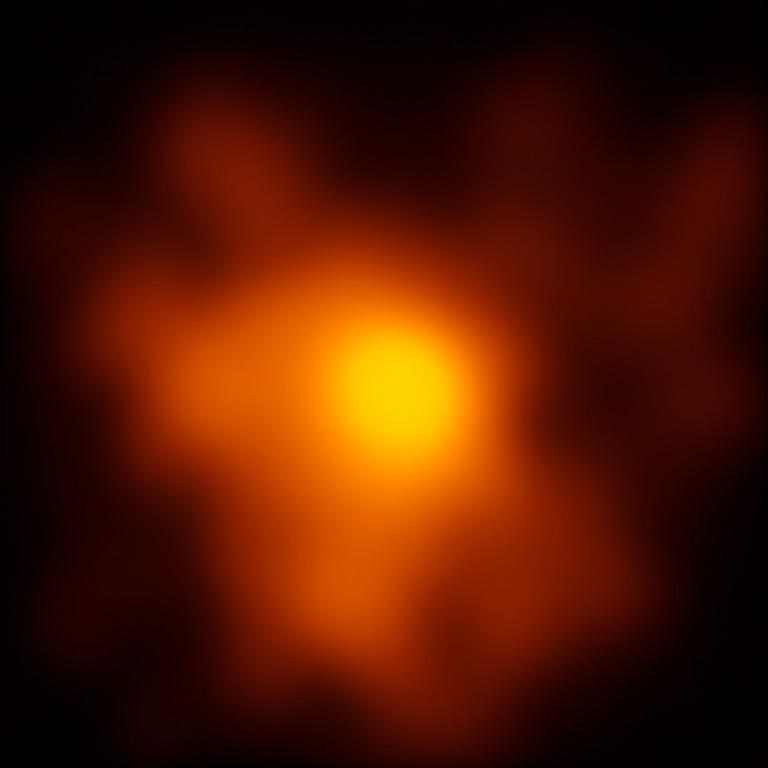
This image represents the best image of the Eta Carinae star system ever made. The observations were made with the Very Large Telescope Interferometer and could lead to a better understanding of the evolution of very massive stars. Credit: ESO
This colossal binary system consists of two massive stars orbiting each other and is very active, producing stellar winds which travel at velocities of up to ten million kilometers per hour. The zone between the two stars where the winds from each collide is very turbulent, but until now it could not be studied.
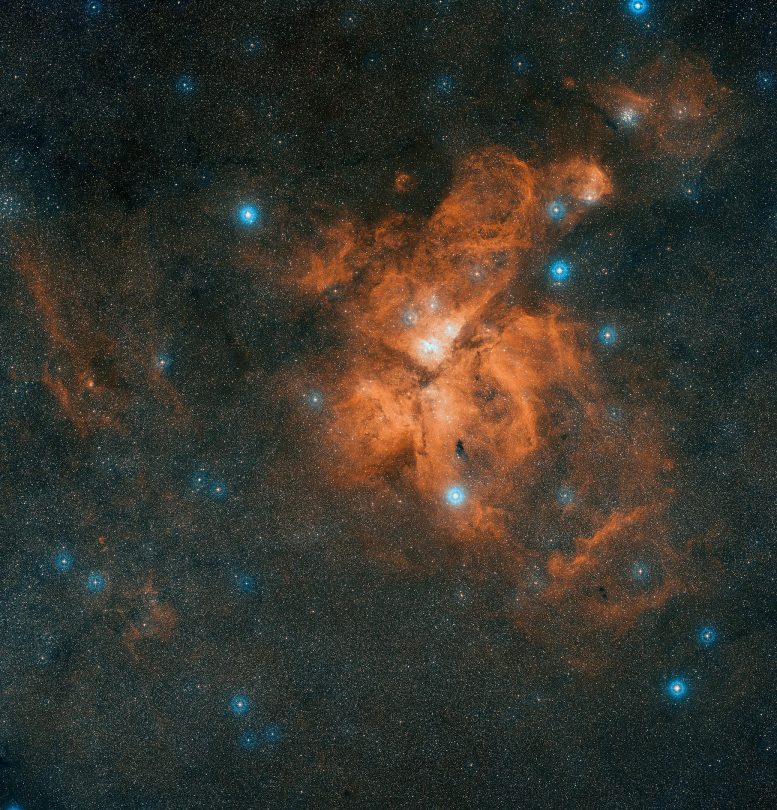
This image is a color composite made from exposures from the Digitized Sky Survey 2 (DSS2). The field of view is approximately 4.7 x 4.9 degrees. Credit: ESO/Digitized Sky Survey 2, Acknowledgment: Davide De Martin.
The power of the Eta Carinae binary pair creates dramatic phenomena. A “Great Eruption” in the system was observed by astronomers in the 1830s. We now know that this was caused by the larger star of the pair expelling huge amounts of gas and dust in a short amount of time, which led to the distinctive lobes, known as the Homunculus Nebula, that we see in the system today. The combined effect of the two stellar winds as they smash into each other at extreme speeds is to create temperatures of millions of degrees and intense deluges of X-ray radiation.
This animation zooms from outside the Homunculus Nebula, which Eta Carinae ejected in a famous outburst in the 19th century, to the system’s two massive orbiting stars. Credit: NASA Goddard CI Lab
The central area where the winds collide is so comparatively tiny — a thousand times smaller than the Homunculus Nebula — that telescopes in space and on the ground so far have not been able to image them in detail. The team has now utilized the powerful resolving ability of the VLTI instrument AMBER to peer into this violent realm for the first time. A clever combination — an interferometer — of three of the four Auxiliary Telescopes at the VLT lead to a tenfold increase in resolving power in comparison to a single VLT Unit Telescope. This delivered the sharpest ever image of the system and yielded unexpected results about its internal structures.
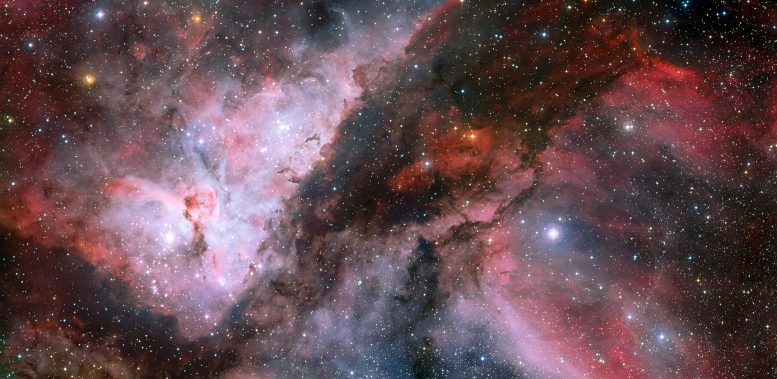
This spectacular panoramic view combines a new image of the field around the Wolf–Rayet star WR 22 in the Carina Nebula (right) with an earlier picture of the region around the unique star Eta Carinae in the heart of the nebula (left). The picture was created from images taken with the Wide Field Imager on the MPG/ESO 2.2-meter telescope at ESO’s La Silla Observatory in Chile. Credit: ESO
The new VLTI image clearly depicts the structure which exists between the two Eta Carinae stars. An unexpected fan-shaped structure was observed where the raging wind from the smaller, hotter star crashes into the denser wind from the larger of the pair.
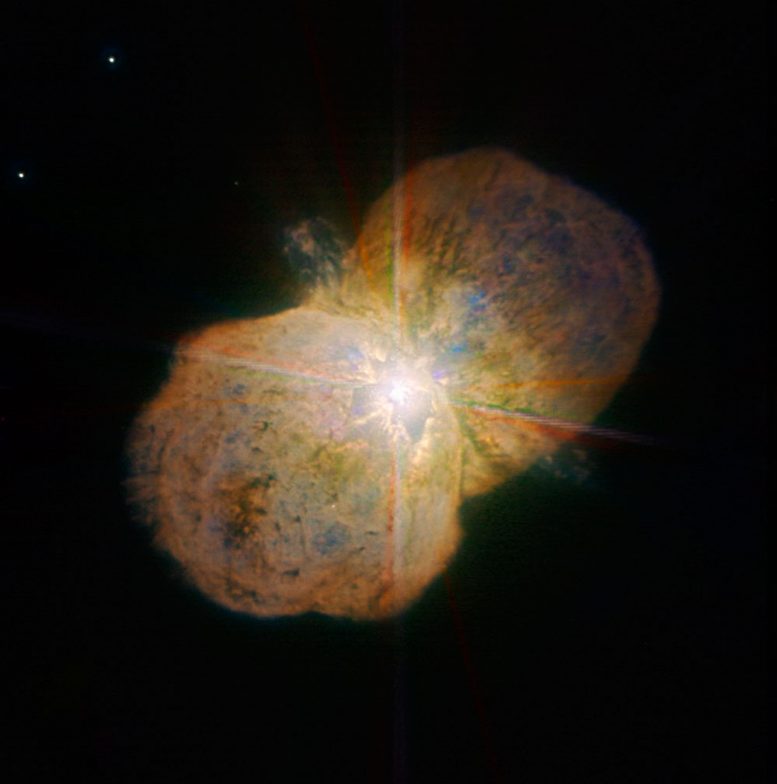
This new image of the luminous blue variable Eta Carinae was taken with the NACO near-infrared adaptive optics instrument on ESO’s Very Large Telescope, yielding an incredible amount of detail. The images clearly show a bipolar structure as well as the jets coming out from the central star. The image was obtained by the Paranal Science team and processed by Yuri Beletsky (ESO) and Hännes Heyer (ESO). It is based on data obtained through broad (J, H, and K; 90-second exposure time per filters) and narrow-bands (1.64, 2.12, and 2.17 microns; probing iron, molecular and atomic hydrogen, respectively; 4 min per filter). Credit: ESO
“Our dreams came true because we can now get extremely sharp images in the infrared. The VLTI provides us with a unique opportunity to improve our physical understanding of Eta Carinae and many other key objects,” says Gerd Weigelt.
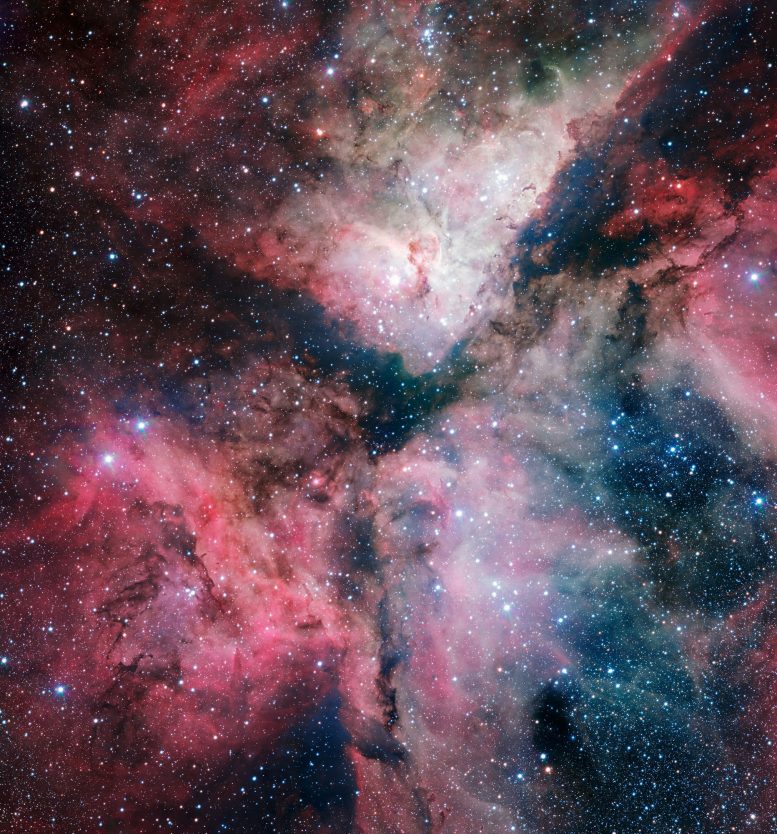
The spectacular star-forming Carina Nebula has been captured in great detail by the VLT Survey Telescope at ESO’s Paranal Observatory. This picture was taken with the help of Sebastián Piñera, President of Chile, during his visit to the observatory on June 5, 2012, and released on the occasion of the new telescope’s inauguration in Naples on December 6, 2012. Credit: ESO. Acknowledgment: VPHAS+ Consortium/Cambridge Astronomical Survey Unit
In addition to the imaging, the spectral observations of the collision zone made it possible to measure the velocities of the intense stellar winds. Using these velocities, the team of astronomers were able to produce more accurate computer models of the internal structure of this fascinating stellar system, which will help increase our understanding of how these kind of extremely high-mass stars lose mass as they evolve.
This animation zooms in on the massive star system Eta Carinae, located in the Carina Nebula. During the zoom the Homunculus Nebula and finally the violent surrounding of Eta Carinae becomes visible.
Team member Dieter Schertl (MPIfR) looks forward: “The new VLTI instruments GRAVITY and MATISSE will allow us to get interferometric images with even higher precision and over a wider wavelength range. This wide wavelength range is needed to derive the physical properties of many astronomical objects.”
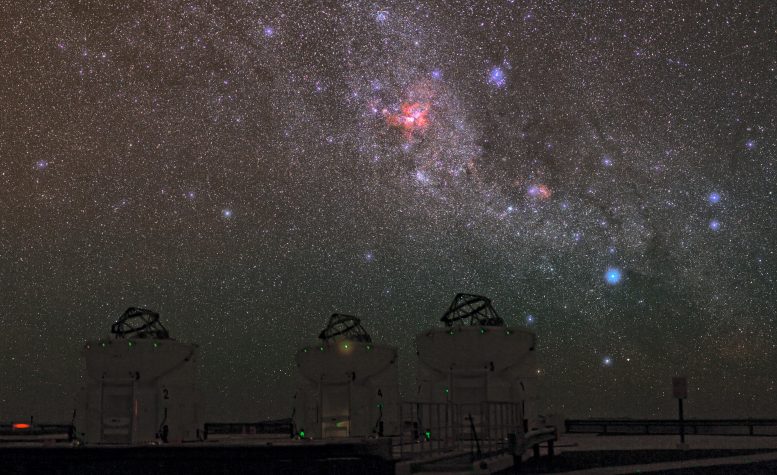
ESO Photo Ambassador, Babak Tafreshi has captured an outstanding image of the sky over ESO’s Paranal Observatory, with a treasury of deep-sky objects.
The most obvious of these is the Carina Nebula, glowing intensely red in the middle of the image. The Carina Nebula lies in the constellation of Carina (The Keel), about 7500 light-years from Earth. This cloud of glowing gas and dust is the brightest nebula in the sky and contains several of the brightest and most massive stars known in the Milky Way, such as Eta Carinae. The Carina Nebula is a perfect test-bed for astronomers to unveil the mysteries of the violent birth and death of massive stars. For some beautiful recent images of the Carina Nebula from ESO, see eso1208, eso1145, and eso1031.
Below the Carina Nebula, we see the Wishing Well Cluster (NGC 3532). This open cluster of young stars was named because, through a telescope’s eyepiece, it looks like a handful of silver coins twinkling at the bottom of a wishing well. Further to the right, we find the Lambda Centauri Nebula (IC 2944), a cloud of glowing hydrogen and newborn stars which is sometimes nicknamed the Running Chicken Nebula, from a bird-like shape that some people see in its brightest region (see eso1135). Above this nebula and slightly to the left we find the Southern Pleiades (IC 2632), an open cluster of stars that is similar to its more familiar northern namesake.
In the foreground, we see three of the four Auxiliary Telescopes (ATs) of the Very Large Telescope Interferometer (VLTI). Using the VLTI, the ATs — or the VLT’s 8.2-meter Unit Telescopes — can be used together as a single giant telescope which can see finer details than would be possible with the individual telescopes. The VLTI has been used for a broad range of research including the study of circumstellar discs around young stellar objects and of active galactic nuclei, one of the most energetic and mysterious phenomena in the Universe.
Credit: ESO/B. Tafreshi (twanight.org)
Reference: VLTI-AMBER velocity-resolved aperture-synthesis imaging of η Carinae with a spectral resolution of 12000″ by G. Weigelt, K.-H. Hofmann, D. Schertl, N. Clementel, M. F. Corcoran,, A. Damineli, W.-J. de Wit, R. Grellmann, J. Groh, S. Guieu, T. Gull, M. Heininger, D. J. Hillier, C. A. Hummel, S. Kraus, T. Madura, A. Mehner, A. Mérand, F. Millour, A. F. J. Moffat, K. Ohnaka, F. Patru, R. G. Petrov, S. Rengaswamy, N. D. Richardson, T. Rivinius, M. Schöller, M. Teodoro and M. Wittkowski, 19 October 2016, Astronomy & Astrophysics.
DOI: 10.1051/0004-6361/201628832
PDF

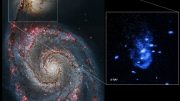
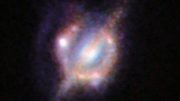
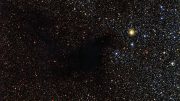
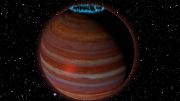



Be the first to comment on "VLT Provides Highest Resolution Image to Date of Eta Carinae"